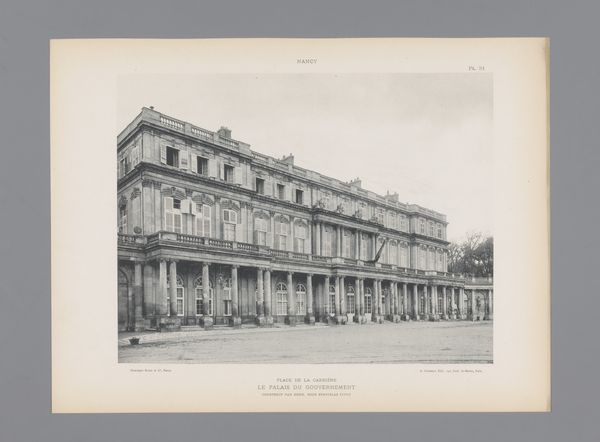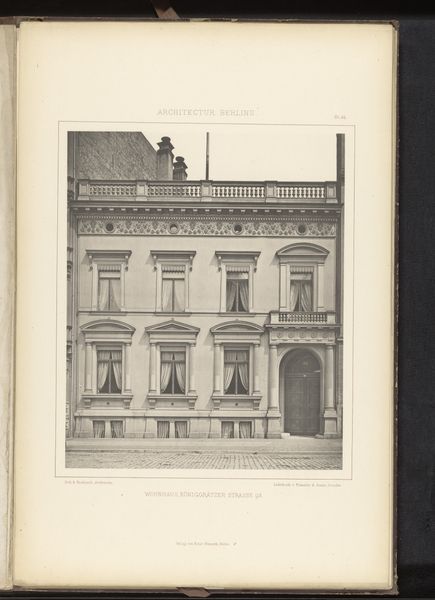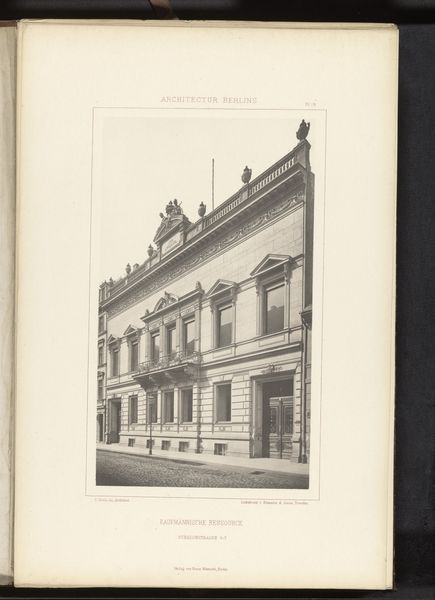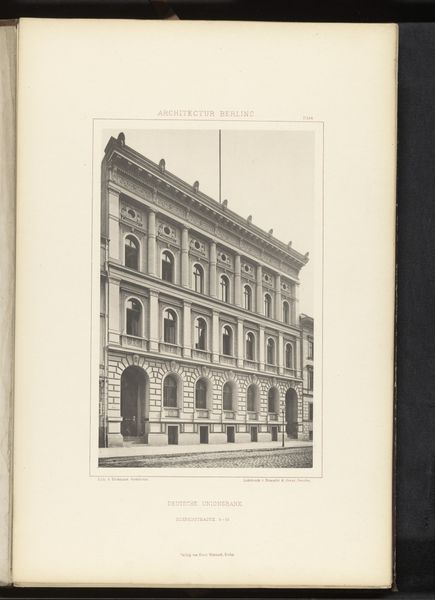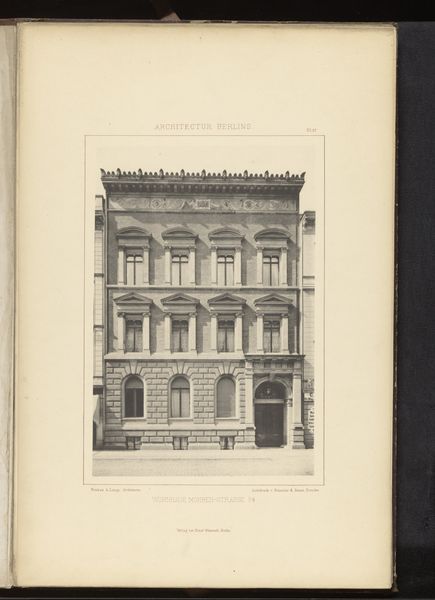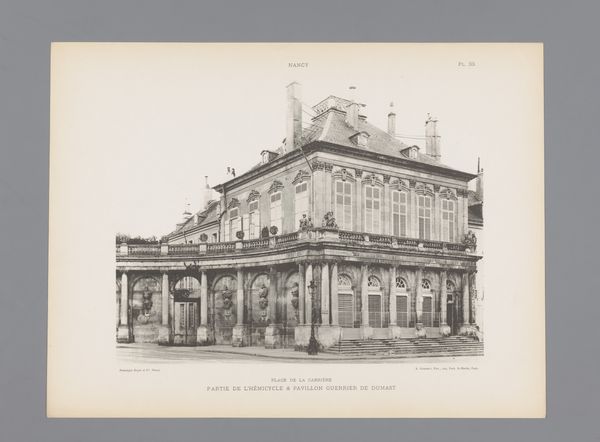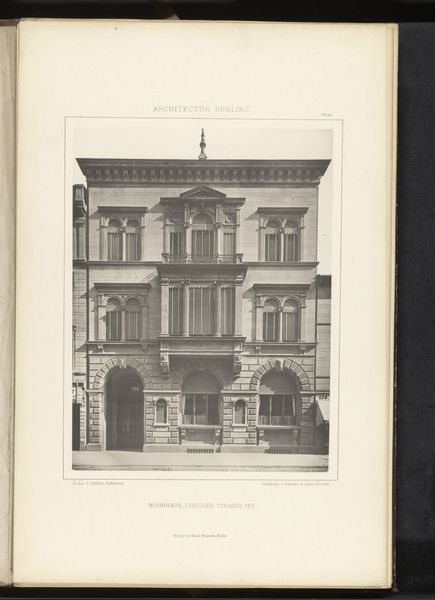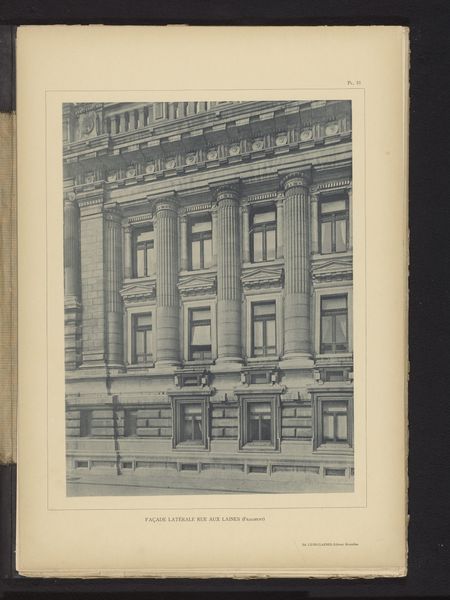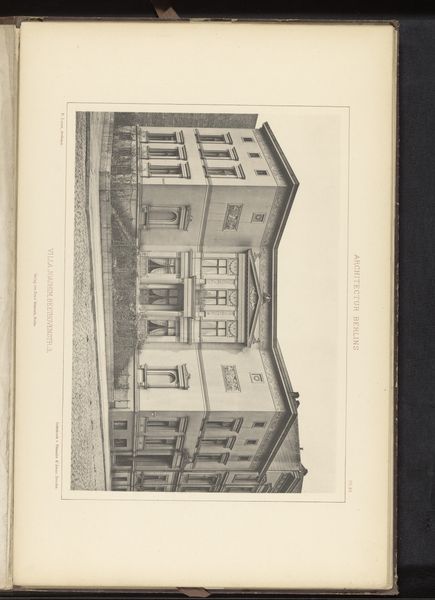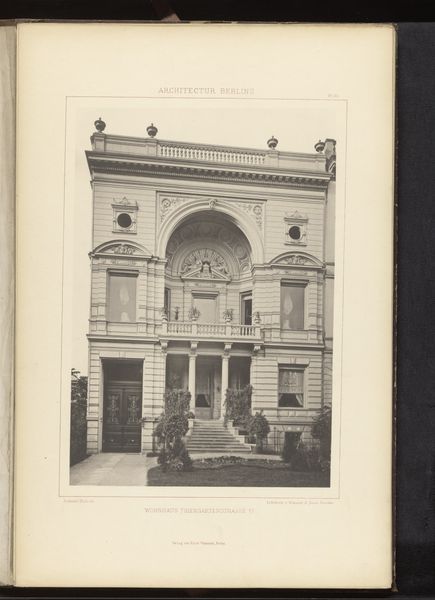
print, photography, architecture
#
neoclassicism
# print
#
photography
#
column
#
cityscape
#
architecture
#
building
Dimensions: height 298 mm, width 401 mm
Copyright: Rijks Museum: Open Domain
Curator: Immediately I see symmetry, formality, and power. There’s a stillness to it, like a grand stage waiting for something to happen. Editor: Well said! This photograph, taken sometime before 1896, presents the facade of the Palais du Gouvernement in Nancy, France. What you're sensing aligns with the architectural style: Neoclassicism. It's rendered in a black and white print. Curator: Before even knowing that, the columns shouted antiquity and grandeur! It makes me think about the theater of governance, and how architecture creates authority. Did it succeed, though? Something feels... distant, perhaps? Editor: The neoclassical style often served specific political purposes. Consider this palais: its design deliberately evokes Roman ideals of order and virtue, projecting an image of stability and reasoned governance during a period of shifting power structures in France. The effect could be alienating. Curator: Precisely. It feels like it's playing a role. The symmetrical columns feel like silent guards. Were the citizens supposed to feel small, perhaps? A bit overawed? Editor: Indeed, and we can ponder how photography itself plays a role in constructing this image of power. The photograph flattens the space, turning a three-dimensional building into a carefully composed image. How might the choice of camera angle, the quality of light, all of this impact how this seat of power was, and still is, perceived? Curator: That's astute. The lack of life also amplifies that static sense of authority. We, as viewers, are denied any kind of lively engagement with the building. Ironic that this frozen moment makes me wonder what life inside those walls looked like. Editor: It becomes a question of access, then—who is invited into the narrative, and who is kept outside, observing the edifice? And thinking about access—this photo, reproduced as a print—helped broaden access to the imagery of power, influencing public opinion in a tangible way. Curator: Fascinating to think about the subtle manipulations in what seems a simple photograph! I started seeing an empty stage, now I notice a gatekeeper… Editor: A photograph documenting architecture and carefully shaping political imagination—architecture and its image play a complex role, indeed.
Comments
No comments
Be the first to comment and join the conversation on the ultimate creative platform.
